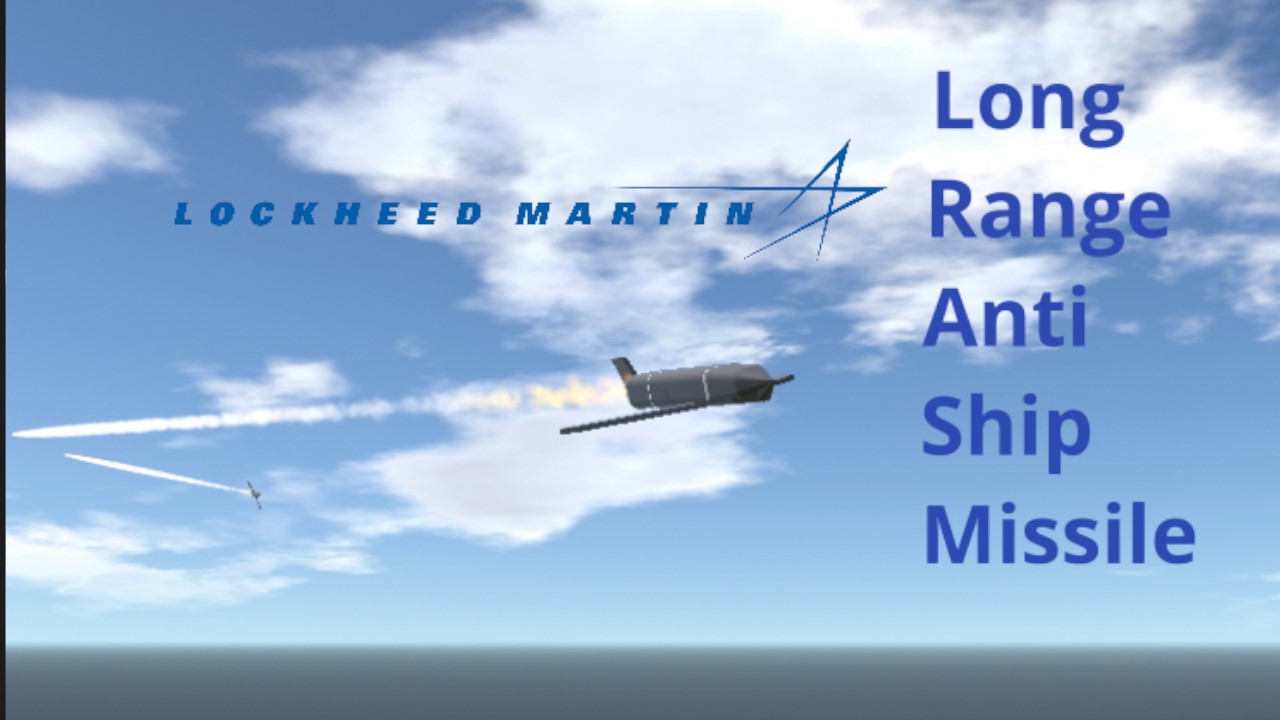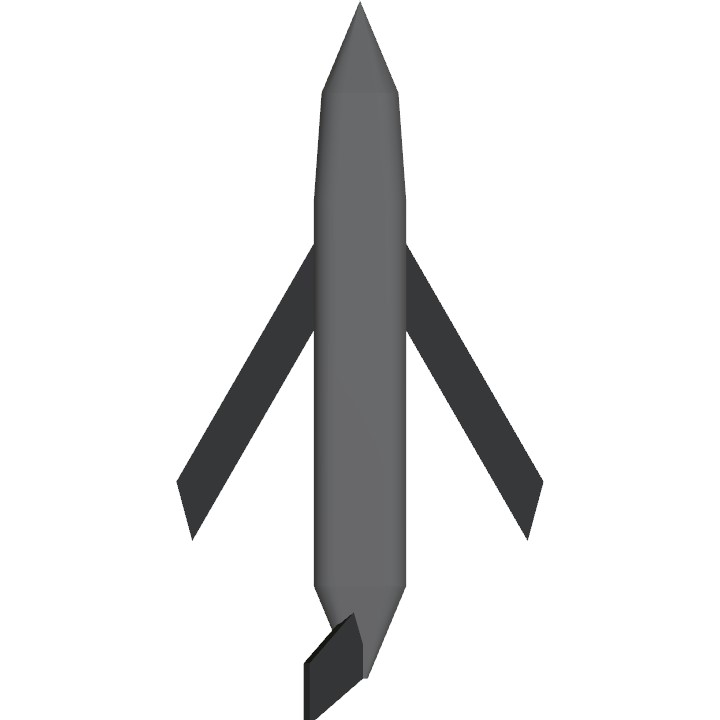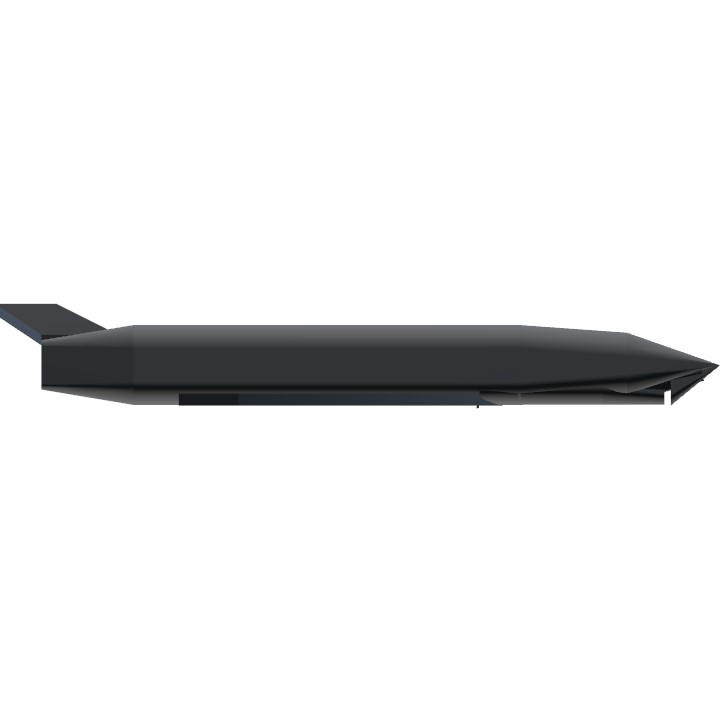Instructions:

Grab the section shown and use it as a sub assembly and then enjoy!
Video:
https://youtu.be/o9_9wVJy92E
Wiki:
The AGM-158C LRASM (Long Range Anti-Ship Missile) is a stealth anti-ship cruise missile developed for the United States Air Force and United States Navy by the Defense Advanced Research Projects Agency (DARPA).[11] The LRASM was intended to pioneer more sophisticated autonomous targeting capabilities than the U.S. Navy's current Harpoon anti-ship missile, which has been in service since 1977.
AGM-158C LRASM
A LRASM at NAS Patuxent River 2015 Aug. 12, 2015.jpg
A Long Range Anti-Ship Missile (LRASM) mass simulator integrated on an F/A-18E Super Hornet at NAS Patuxent River in 2015.
Type
Anti-ship missile
Cruise missile
Air-launched cruise missile
Place of origin
United States
Service history
In service
2018 to present[1]
Used by
United States Navy
United States Air Force
Royal Australian Air Force
Production history
Designer
DARPA
Manufacturer
Lockheed Martin
Unit cost
US$3,960,000[2] (FY 2021)
$3 million[3]
Specifications
Mass
2,500 lb (1,100 kg) (air-launch)[4]
4,400 lb (2,000 kg) (w/ booster)[5]
Warhead
1,000 lb (450 kg) blast-fragmentation penetrator[6]
Operational
range
370 km (230 mi; 200 nmi)[7][8]
Maximum speed
High-subsonic
Launch
platform
Aircraft:
F/A-18E/F Super Hornet
B-1B Lancer
F-35 Lightning II (integrating)
Boeing P-8 Poseidon[9][10]
C-17, C-130 via Rapid Dragon palletized launcher
Other:
Mk 41 VLS (in perspective)
The Navy was authorized by the Pentagon to put the LRASM into limited production as an operational weapon in February 2014 as an urgent capability stop-gap solution to address range and survivability problems with the Harpoon and to prioritize defeating enemy warships, which has been neglected since the end of the Cold War but taken on importance with the modernization of the Chinese People’s Liberation Army Navy.
Competitors to Lockheed Martin protested the decision to award them a contract given the circumstances of selection and competition for the missile. The Navy responded by saying Lockheed's LRASM program was limited in scope, the decision to move ahead with them was made after an initial DARPA contract award, and that it was an urgent need to face future threats.
In 2014, the Navy said it will hold a competition for the Offensive Anti-Surface Warfare (OASuW)/Increment 2 anti-ship missile as a follow-on to LRASM to enter service in 2024.[12] The OASuW Increment 2 competition will be completely open and start by FY 2017.[13][needs update] It is expected the LRASM will compete against the joint Kongsberg/Raytheon offering of the Joint Strike Missile (JSM) for air-launch needs and an upgraded Raytheon Tomahawk cruise missile for surface-launch needs.[14]
Enjoy and have a wonderful day!
Specifications
General Characteristics
- Created On iOS
- Wingspan 9.5ft (2.9m)
- Length 19.2ft (5.8m)
- Height 2.6ft (0.8m)
- Empty Weight 4,668lbs (2,117kg)
- Loaded Weight 4,959lbs (2,249kg)
Performance
- Power/Weight Ratio 3.398
- Wing Loading 226.8lbs/ft2 (1,107.5kg/m2)
- Wing Area 21.9ft2 (2.0m2)
- Drag Points 474
Parts
- Number of Parts 27
- Control Surfaces 0
- Performance Cost 139





i use it on your F18 . thank you
Hello can you send me your photo profil the first time you use it
@UmbrellaCorporation yes indeed
@IMULAerospaceIndustries I added a YouTube link on how to use
I will update
@HololiveFan how?
@IMULAerospaceIndustries same here
Doesn’t work
LRASM?
@AlbertanPlaneMaker just put it on a build you haven’t released yet.
@1VirtualRealityConversion
Illegalness 100
@AlbertanPlaneMaker Could you put this on your commercial plane?
@Bryan5
@Itirv123
@OUGHTO